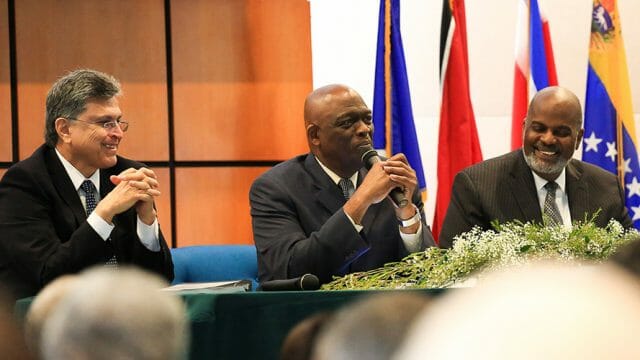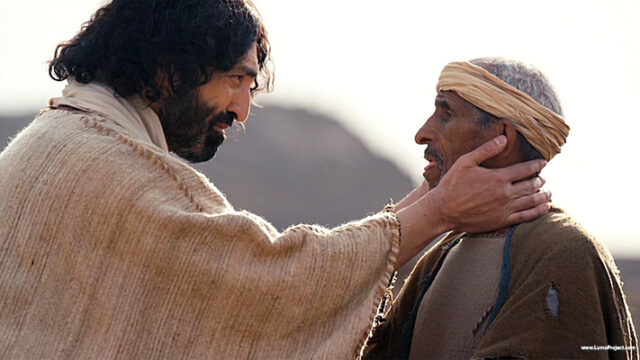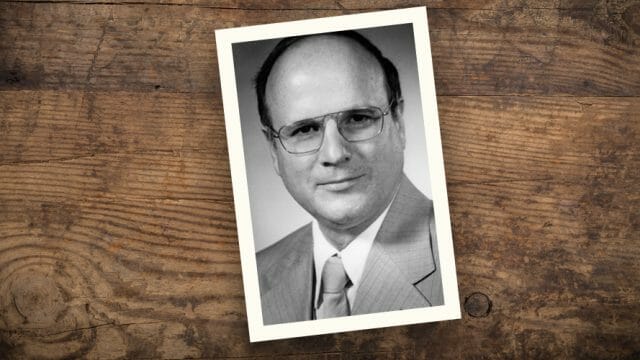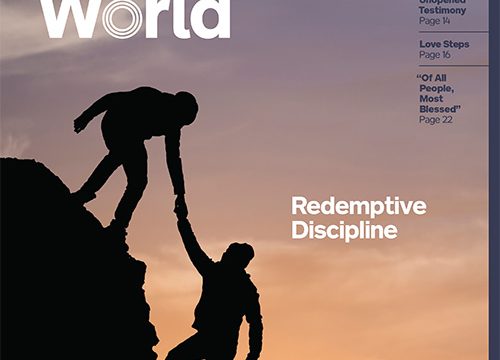People of diverse cultural backgrounds may reach the distinctive tenets of Seventh-day Adventism directly from the Bible.

Seventh-day Adventists are found today throughout the entire globe thanks to evangelistic efforts spearheaded and funded largely by North Americans since the mid-nineteenth century. The movement may have its roots in other lands even earlier, and 2018 may rightfully be celebrated as a significant bicentennial. This is affirmed on the basis of a recently recovered manuscript, thought to be lost, dating from around 1818, and authored by someone who not only believed in the soon Second Coming, but also in the biblical Sabbath and the unconscious state of those who are dead.
Before the Millerites
The Millerite movement, begun in the United States in the 1840s, was preceded by the European Advent Awakening in the late 1820s. This Advent awakening was heavily influenced by the book The Coming of the Messiah in Glory and Majesty, written by Jesuit priest Manuel Lacunza (b. Chile, 1731-d. Italy, 1801), while he was exiled in the Papal States in the 1790s. This work showed that the Bible places the Second Coming before, not after, the millennium. All of Christendom at the time thought the event would be postponed until after all the governments of the world would be subject to the Christian church in millennial peace and prosperity.
Edward Irving translated Lacunza’s manuscript into English in 1825, and enthusiasts in prophecy began to study it in earnest during the Albury Park Conferences (1826-1831) near London, England. Public dialogue on the issue spread to other venues, publications, and books. Soon the understanding of the Second Coming happening before the millennium came to be accepted by evangelical churches. Traditional churches, Catholic or Protestant, were, however, too tied to their governments to accept the ideas of Lacunza and Albury Park, which did not require the conversion of the world but only the worldwide preaching of the gospel as prerequisite for the Second Coming.
William Miller reached his own premillennial conviction in 1816-1818 after checking the biblical foundations of the Christian premillennial ideas of his time. When the echoes of the English Advent Awakening reached the shores of North America Miller was invited to preach, thereby launching the North American Advent movement.
While Miller is the most important precedent of Seventh-day Adventism in the North America of the nineteenth century, he differed from modern Seventh-day Adventists on two important points. Miller rejected the seventh-day Sabbath and the unconscious state of the dead. The biblical Sabbath, however, was accepted by a group of Millerites led by Joseph Bates and James White between 1848 and 1850. George Storrs, another Millerite preacher, convinced them concerning the unconscious state of the dead.
Meanwhile, in South America
But in South America another man preached the entire package of doctrines that now characterize Seventh-day Adventists decades before Bates and White did. Francisco H. Ramos Mejía (or Mexia, 1773-1828), educated in a Catholic seminary in Argentina, acquired Lacunza’s work in 1816 or 1817.
Ramos Mejía wrote abundant notes on its pages, defending not only premillennialism but also the unconscious state of those who are dead. In 1820 he was ordered by the government in Buenos Aires to cease and desist from observing and spreading the message about Saturday as the biblical Sabbath.
Seventh-day Adventist scholars in Argentina and the United States had some inkling of the existence of the writings of Ramos Mejía, thanks to a 1913 article in a Protestant journal published in Buenos Aires. Try as they might, however, they were unable to secure any of those writings until 2016, when a sizable portion of his manuscripts was donated anonymously. Other manuscripts have perished, destroyed by descendants offended by his opinions that stood opposed to Roman Catholic theology. The donation is now housed in the library of River Plate Adventist University in Argentina.
The Importance of Ramos Mejía
Ramos Mejía, an Argentinian patriot, was elected city council member of Buenos Aires (1810-1811), worked as a cattle rancher, taught religion to local indigenous people, and served as their representative for agreements established with (and repeatedly violated by) the federal government. His closeness to the native population fed the mistrust and suspicions of the government, which ordered Ramos Mejía to return from Indian territory in 1821 and confined him to another ranch, Los Tapiales (near the present city of Ramos Mejía, in metropolitan Buenos Aires) until his death.
Ramos Mejía is of historical interest for Protestants because in spite of being educated by Jesuits, he came to exhibit evangelical viewpoints. He especially rejected the real presence of Christ in the bread and wine of the Mass, which he condemned as idolatry. For him “the righteous lives by faith before Jesus.”*
Ramos Mejía also considered the doctrine of the pope as Jesus’ vicar “an ancient iniquity” in view of the real priesthood and headship of Jesus Christ. He stated, “Where is the antichrist? Revelation 13:3”—referring to the text that says, “And I saw one of his heads as if it had been mortally wounded, and his deadly wound was healed. And all the world marveled and followed the beast.”
Ramos Mejía considered the work of Lacunza of great interest. He based his hope for life beyond the grave solely on the resurrection: “Man and his soul, or however the latter may be called, will dissolve, for ‘to dust you shall return’ [Gen. 3:19]. But later it will rise again, Gentlemen!” His concept of humanity was very modern: “If the body of man is just dust, his spirit is nothing else than its organization for rational life, since spirit and life is the same thing (see John 6:63).”
Ramos Mejía contrasted “the delicate law of the Sabbath, which proceeds from the will of the Creator,” against the “discordant note” of Sundaykeeping. He maintained that while Sunday superficially resembles the Sabbath (like Cain’s sacrifice), it misses its inner significance. While Abel’s lamb prefigured the Lamb of God, Cain’s vegetables were just a “discordant note.” Hence the observance of Saturday as the true day of rest must be “restored to its pristine state.”
Adventists in North America recovered such biblical concepts as the seventh-day Sabbath and the unconscious state of the dead without the help of Ramos Mejía. But his writings demonstrate that people of diverse races and cultural backgrounds may reach the distinctive and characteristic tenets of Seventh-day Adventism directly from the Bible, independent from human authors or missionaries.
The last warning of heaven to this world must go “to every nation, tribe, tongue, and people” (Rev. 14:6). The recent reappearance of a 200-year old Spanish manuscript seems like a sign from providence to remind us of our responsibility to urgently spread this biblical message far and wide.
* Unless otherwise noted, quotations in this article are from “Ramos Mejía, el primer adventistamoderno,” by Juan Carlos Priora in RevistaAdventista, March 2017.








